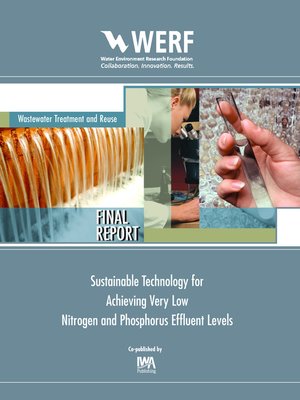Sustainable Technology for Achieving Very Low Nitrogen and Phosphorus Effluent Levels
ebook ∣ WERF Report 02-CTS-1
By Krishna Pagilla

Sign up to save your library
With an OverDrive account, you can save your favorite libraries for at-a-glance information about availability. Find out more about OverDrive accounts.
Find this title in Libby, the library reading app by OverDrive.



Search for a digital library with this title
Title found at these libraries:
| Library Name | Distance |
|---|---|
| Loading... |
Available as eBook only.
This project addresses the successful nitrogen and phosphorus removal technologies being implemented at existing wastewater treatment plants (WWTPs), some key challenges and knowledge gaps in implementing technologies, research needs to improve the existing methods and technologies to achieve low total nitrogen (TN) and total phosphorus (TP) effluents (TN
The investigations included membrane bioreactor application for N and P removal from wastewater, centrate treatment, and to achieve simultaneous nitrification and denitrification. The results indicated membrane based applications are attractive methods for achieving low TN and TP effluents, but supplementary chemical addition is needed depending on the wastewater characteristics. Full scale implementation of step feed BNR with chemical P removal was demonstrated as a successful technology transfer application at John Egan Wastewater Reclamation Plant of Metropolitan Water Reclamation District of Greater Chicago (MWRDGC).
This project addresses the successful nitrogen and phosphorus removal technologies being implemented at existing wastewater treatment plants (WWTPs), some key challenges and knowledge gaps in implementing technologies, research needs to improve the existing methods and technologies to achieve low total nitrogen (TN) and total phosphorus (TP) effluents (TN
The investigations included membrane bioreactor application for N and P removal from wastewater, centrate treatment, and to achieve simultaneous nitrification and denitrification. The results indicated membrane based applications are attractive methods for achieving low TN and TP effluents, but supplementary chemical addition is needed depending on the wastewater characteristics. Full scale implementation of step feed BNR with chemical P removal was demonstrated as a successful technology transfer application at John Egan Wastewater Reclamation Plant of Metropolitan Water Reclamation District of Greater Chicago (MWRDGC).






